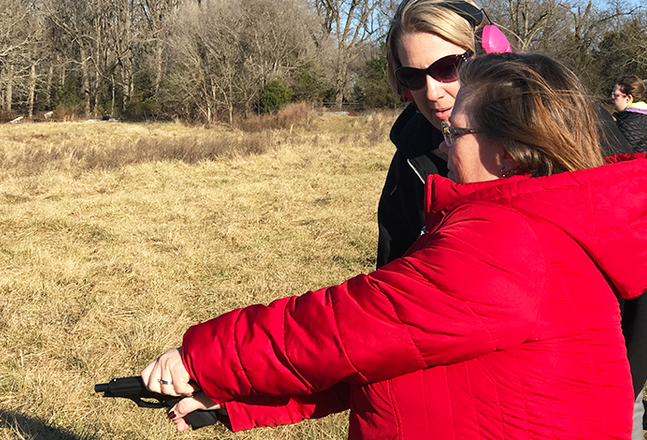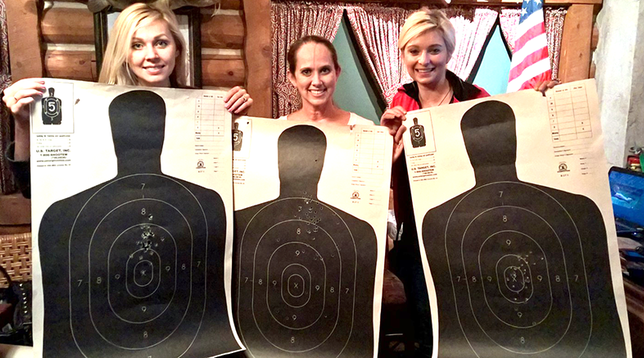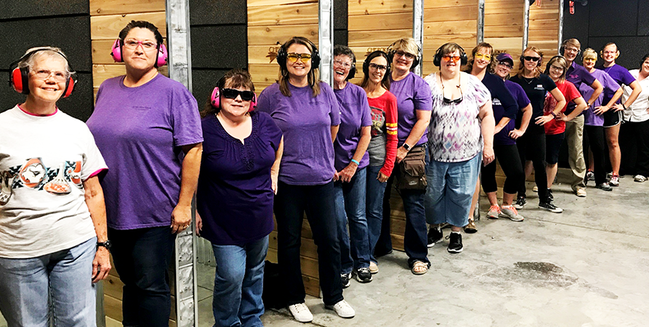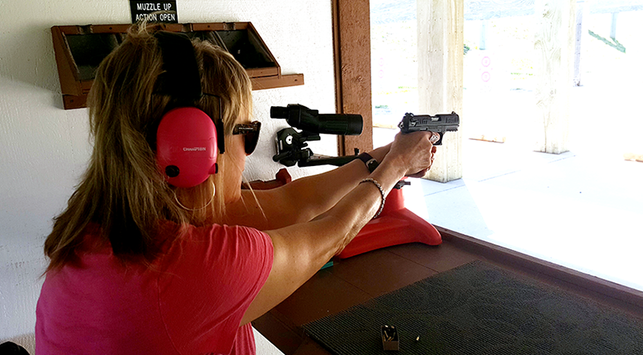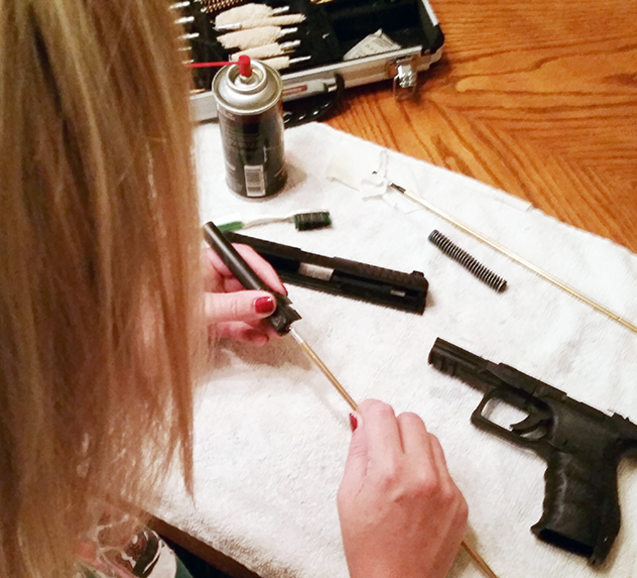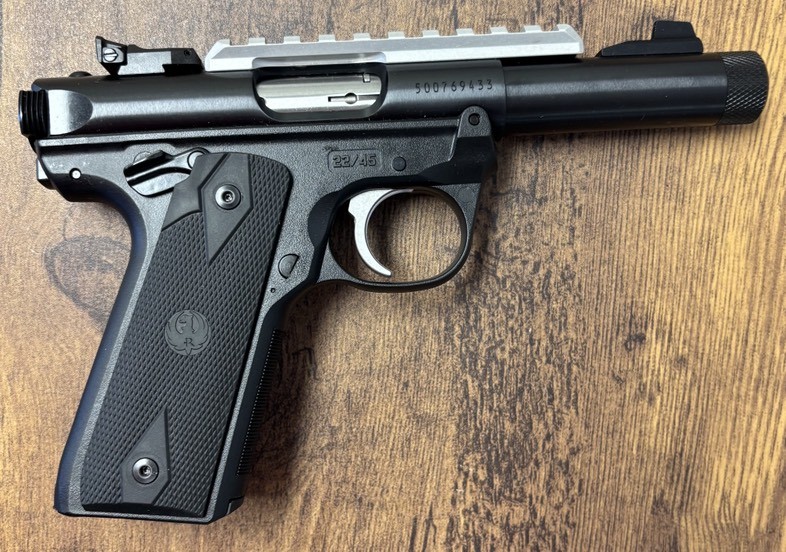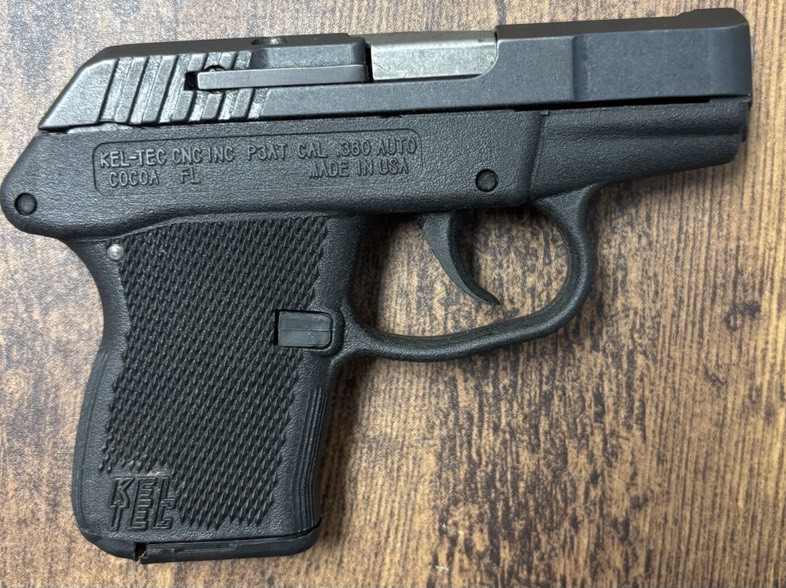Female Gun Owner Q&A
The path of new #gun ownership can sometimes bring twists and turns, and plenty of uncertainty. As a #firearms #instructor, I hear plenty of questions, especially from females. This list isn’t exhaustive by any stretch of the imagination, but these are some of the most common questions I’m asked. —SB
1. How do I know if I’m choosing the right gun for me? If you’re looking for a concealed carry gun, obviously we can narrow down the options to handguns instead of rifles or shotguns. From there, the options are a semi-automatic or a revolver. The first thing I do when I’m shopping for a gun is hold each one. Just like a pair of shoes on your feet, only you can know if a gun feels good in your hand and if it fits well.Once you’ve narrowed down those options, I’d highly encourage shooting a few different models at the range. Try different sized guns and multiple calibers. Many gun ranges rental options that allows you to try a gun, or several, for an hour at a time, which is a good chance to try before you buy. If that's not an option, see if any of your friends have guns that they’d allow you to try out. Choose a gun that feels comfortable in your hand, and that you’d enjoy shooting.
2. Should I have a firearm for personal protection and a different one for home defense? I say it’s not necessary to have a designated gun for the designated purposes of concealed carry and home defense. More than one gun is a nice thing to have, but a carry gun can do double-duty as a home defense gun, and it offers the advantage to the user of not having to become familiar with two different firearms. The main thing to consider is where you plan to keep it while you’re at home, especially while you’re sleeping. Do you have a bedside safe? Will you keep it in your nightstand? If your house is broken into in the middle of the night, it’s important that you’re able to get to your gun quickly, and be able to do so while you’re still groggy, so that all must be taken into consideration when you're deciding on your home defense plan.
3. How does a semi-automatic work? A modern semi-automatic handgun has a removable magazine that holds a certain number of cartridges (ammunition) which are kept under tension by a spring and a polymer follower. The magazine is inserted into the magazine well, located in the grip of the handgun, where it locks into place. When the trigger is depressed, one round is fired. When that happens, some of the energy is used to forced the slide backward, which ejects the spent casing. The recoil spring then moves the slide forward back to its original position. As it's moving forward, the slide loads the next cartridge from the magazine into the chamber, where it's ready to be fired, and start the whole thing over again. This process is repeated each time the trigger is pulled until the firearm is empty. On most semi-autos, the slide will lock back when the last round has been fired. There are plenty more details involved with the differences among semi-auto actions, but these are the basics. When testing out a gun at the range, you should consider how the gun operates and if you're comfortable with the controls, as well as the feel and the way it shoots.
4. Will the gun just “go off” by itself? Generally, a modern firearm that is in good working order and hasn’t been modified won’t fire by itself. Gun manufacturers design pistols with a firing pin block, which prevents the gun from firing even when dropped. That said, there accidents do happen. Accidental discharges can happen when a person isn’t careful about keeping their finger off the trigger, or a holster doesn’t sufficiently cover the trigger guard. Never, ever put your finger on the trigger of a firearm until you are ready to shoot it.
5. What are the best clothing options for concealing a gun? Most of the time it’s easier to pick a holster based on the type of clothing typically worn. However, there are some good tips when you’re buying clothing that will make it easier to conceal a firearm. Generally, patterns and prints work really well to break up the outline of a firearm. Shirt materials that are lightweight and flowy, not skin-tight and sheer, help prevent the gun bulge from being visible. If you’re going to carry on your waist with a belt, get a sturdy one that will keep the holster and gun snug against your body without sagging or sliding around. If possible, I’d recommend trying on clothing in a dressing room to see if your gun is concealed well with that particular item or outfit. Also, thicker gun belts are often wider than typical belts, so make sure your belt loops can handle it.
